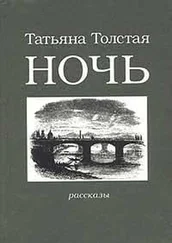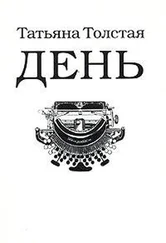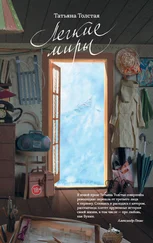—What nonsense, I said to myself. Why do I feel anguish, what am I scared of?
—Of me, came the soundless voice of death. I am here….
I tried to lie down but as soon as I did, I jumped up in horror. The anguish, the anguish—the same dread as comes before nausea, but only spiritual. Frightening, terrifying. Seemingly it’s fear of death, but if you recollect, think about life, then it’s actually a fear of a life dying. Life and death were merging into one. Something was trying to tear my soul to pieces but was unable to do it. I went to look once again at those who were sleeping; I tried to fall asleep, too; same kind of dread—red, white, square. Something being torn apart but not tearing. Painful, painfully dry and malicious; not a drop of kindness could I sense within myself. Only an even, calm anger with myself and with that which had made me.
This famous and mysterious event in Tolstoy’s life—which was not simply a sudden, major depressive episode but an unforeseen kind of meeting with death, with evil—was named “the Arzamas horror.” Red, white, square. Sounds like a description of one of Malevich’s paintings.
Leo Tolstoy, who personally experienced the red-white Square, couldn’t foresee, or control, what happened. It appeared before him and it attacked him, and under its influence—not right away, but steadily—he renounced the life that he’d led before; he renounced his family, love, the understanding of those close to him, the foundations of life around him; he renounced art. This “truth” that was revealed to him led him into nothingness, into the zero of form, into self-destruction. On a “spiritual quest,” toward the end of his life, he found only a handful of banalities—a version of early Christianity, nothing more. His followers, too, walked away from civilization, and likewise didn’t arrive anywhere. Drinking tea instead of vodka, abstaining from meat, rejecting family ties, making one’s own boots—poorly, crookedly—that, essentially, is the result of this personal spiritual quest that passed through the Square. “I’m here” came the soundless voice of death, and life went downhill from there. The struggle went on; Anna Karenina (mercilessly killed off by the author, punished for her desire to live) was still ahead of him. Still before him were several literary masterpieces, but the Square had won.
Tolstoy banished from within himself the life-giving power of art, moving on to primitive parables and cheap moralizing. He let his light go out of him before his physical death, in the end astonishing the world not with the artistry of his later works but with the magnitude of his genuine anguish, his individual protest and public self-flagellation on a hitherto unprecedented scale.
Malevich also wasn’t expecting the Square, although he was searching for it. In the period before the invention of Suprematism (Malevich’s term), he preached “alogism,” an attempt to escape the boundaries of common sense; preached “the struggle against logism, naturalness, philistine sensibilities, and prejudices.” His call to action was heard, and the Square appeared before him, absorbing him within it. Malevich had every right to be proud of the celebrity afforded him by his deal with the Devil. And proud he was. I don’t know if he noticed the paradox of this celebrity status. “The painter’s most famous work” meant that his other works were less famous, less important, less enigmatic; in other words, they were less worthy. And it’s true—alongside The Black Square, all his other works lose luster. He has a series of canvases of geometric, brightly colored peasants with empty ovals for faces that look like transparent, unfertilized eggs. They are colorful, decorative paintings, but they come across as a tiny and insignificant stew of rainbow colors, finally swirling into a colorful funnel before they disappear into the bottomless pit that is The Black Square. He has landscapes—pinkish, impressionistic, very run-of-the-mill—the kind painted by many, and often better. Toward the end of his life, he tried to return to figurative art, and those attempts look predictably bad: these aren’t people but, rather, embalmed corpses and wax dolls, tensely peering out from the frames of their clothing, as if they’ve been cut out of colorful bits of fabric, scraps and leftovers from the “peasants” series. Of course, when one reaches the top, the only way is down. The terrible truth was that, at the top, there was nothingness.
Art critics write lovingly about Malevich: “ The Black Square absorbed all painting styles that had existed before it; it blocks the way for naturalistic imitation, it exists as absolute form, and it heralds art in which free forms—those that are interconnected and those that are not—make up the meaning of the painting.”
It’s true that the Square “blocks the way,” including the way for the artist. “It exists as absolute form”—that’s true as well, but it also means that all other forms are unnecessary by comparison, since they are, by definition, not absolute. “It heralds art”—this bit turned out to be false. It heralds the end of art, its impossibility, its lack of necessity; it represents the furnace in which art burns, the pit into which art falls, because the Square (to quote Benois again) is “an act of self-assertion of that entity called ‘the abomination of desolation,’ which boasts that through pride, through arrogance, through trampling of all that is loving and gentle, it will lead all beings to death.”
A “pre-Square” artist studies his craft his entire life, struggling with dead, inert, chaotic matter, trying to breathe life into it; as if fanning a fire, as if praying, he tries to ignite a light within a stone; he stands on his tippy toes, craning his neck in an attempt to peek where the human eye cannot see. Sometimes his efforts and prayers, his caresses, are rewarded: for a brief moment, or maybe for a long while, “it” happens, “it” “appears.” God (an angel, a ghost, a muse, or sometimes a demon) steps back and acquiesces, letting go from his hands those very things, those volatile feelings, those wisps of celestial fire—what should we call them?—that they have reserved for themselves, for their wondrous abode that is hidden from us. Having solicited this divine gift, the artist experiences a moment of acute gratitude, unhumiliating humility, unshameful pride, a moment of distinct, pure, and purifying tears—both seen and unseen—a moment of catharsis. But “it” surges, and “it” retreats, like a wave. The artist becomes superstitious. He wants to repeat this moment, he knows that, next time, he may not be granted a divine audience, and so his spiritual eyesight opens up, he can sense with deep inner foreknowledge what exactly—avarice, selfishness, arrogance, conceit—may close the pearly gates in front of him. He tries to wield his inner foreknowledge in such a way as not to sin before his angelic guides; he fully understands that he’s a co-author at best, or an apprentice—but a crowned co-author, a beloved apprentice. The artist knows that the Spirit blows wherever it pleases. He knows that he, the artist, has done nothing in his earthly life to deserve being singled out by the Spirit, and so if that should happen he ought to joyfully give thanks for this wonder.
A “post-Square” artist, an artist who has prayed to the Square, who has peeked inside the black hole without recoiling in horror, doesn’t trust muses and angels; he has his own black angels, with short metallic wings—pragmatic and smug beings who know the value of earthly glory and know how to bite off its most satisfying and multilayered chunks. Craft is unnecessary, what you need is a brain; inspiration is unnecessary, what’s needed is calculation. People love innovation, you need to come up with something new; people love to fume, you need to give them something to fume about; people are indifferent, you need to shock them: shove something smelly in their face, something offensive, something repugnant. If you strike a person’s back with a stick, they’ll turn around; that’s when you spit in their face and then, obviously, charge them for it—otherwise, it’s not art. If this person starts yelling indignantly, you must call them an idiot and explain that art now consists solely of the message that art is dead—repeat after me: dead, dead, dead. God is dead, God was never born, God needs to be trod upon, God hates you, God is a blind idiot, God is a wheeler-dealer, God is the Devil. Art is dead and so are you, ha-ha, now pay up! Here is a piece of excrement for it; it’s real, it’s dark, it’s dense, it’s locally sourced, so hold it tight and don’t let it go. There is nothing “loving and gentle” out there and there never was, no light, no flight, no sunbeam through a cloud, no glimmer in the dark, no dreams, and no promises. Life is death; death is here; death is immediate.
Читать дальше






